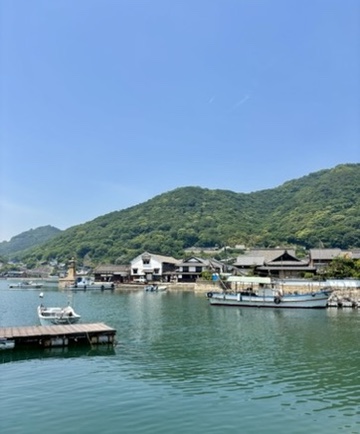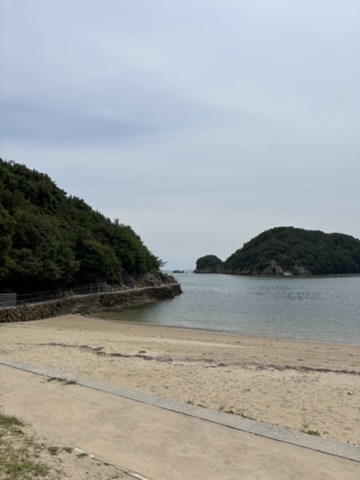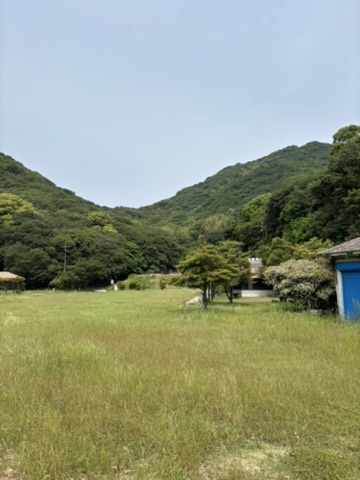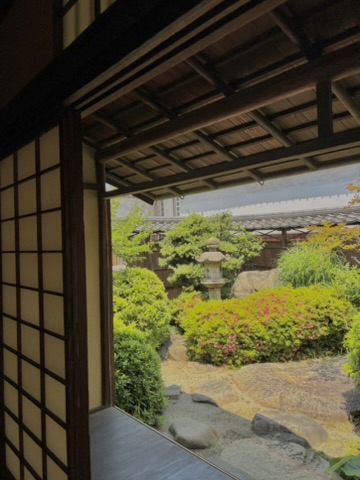
Ponyo's Hometown
Lying on the soft woven floor of a restored medieval-era Japanese home, I stared at a black and white watercolor of a frog that looked ready to jump. The wooden roof creaked at random and I watched through an open door as bugs jumped from flower to flower in the garden. The house was completely empty, save a tea room with a few vintage mugs and a kettle.
A distillery once operated out of the home, brewing local liquor infused with herbs and flora. Next door, an elderly woman offered samples from her own bottles, which she sold at a reasonable price. The streets of Tomonoura were remarkably quiet, in part because practically the entire town is closed on Wednesday—souvenir stores were shuttered, as were restaurants. In the picturesque harbor, tarps covered most fishing boats and poles sat unattended along the walkway.
As our public bus weaved along the rocky coast from Fukuyama, we had no idea that Tomonoura would essentially be ours to explore. With ample space from the crowds at popular sites across Japan’s major cities, we meandered through quiet streets and past wood paneled houses. Gardens and flowerbeds dotted the narrow stone streets.
The purpose of our excursion from Hiroshima was to locate a Shinto shrine that hosted Korean envoys during the eighteenth century. It was not hard to find—the entirety of Tomonoura can be traversed in under half an hour, but its charm is in its quaint, local feel. After arriving at the shrine, and taking our shoes off outside, we were met with an incredible view of the Inland Sea and its green islands.
Once our academic material was acquired—with the help of our professor, who headed to the archival center alone—we headed to the one-room ferry port to hop over to a nearby island. The journey, on an antique wooden ship with portraits and maps inside, took us over aquamarine waters and into an even smaller harbor, this one with no ticket station or attendant. Disembarking, we walked along a small trail and reached a beach that faced yet another small, uninhabited island and the open sea. I laid on the warm grass, and promptly fell asleep.
When we arrived back to Tomonoura on the same ferry boat, we anticipated not having enough time for lunch. Fortunately, we had misread the bus schedule and found ourselves with an extra hour to spare.
A small wooden restaurant along the main two-lane thoroughfare looked inviting enough, and we headed inside. They had eight seats, ideal for our group of seven. After a brief, delicious experience with fried oysters, we dined on local salmon rice bowls—a three-step affair that involved dividing the meal into thirds. At its base, the bowl included fish, fish eggs, rice, and greens. The first step was to grind sesame seeds into a fine powder, mix them with soy sauce, and pour the mixture over the bowl. After we each ate a third of our meal, we added a runny egg into the equation. Finally, when only a third of the initial amount remained, we poured hot soup onto the rice and added a fish-shaped cracker.
With ten minutes on the clock before Bus 5 was set to return us to Fukuyama Station, I found herbal ice cream of the same flavor as the sake we had tried earlier in the day—a fitting end to a relaxing adventure on Japan’s inland coast.




